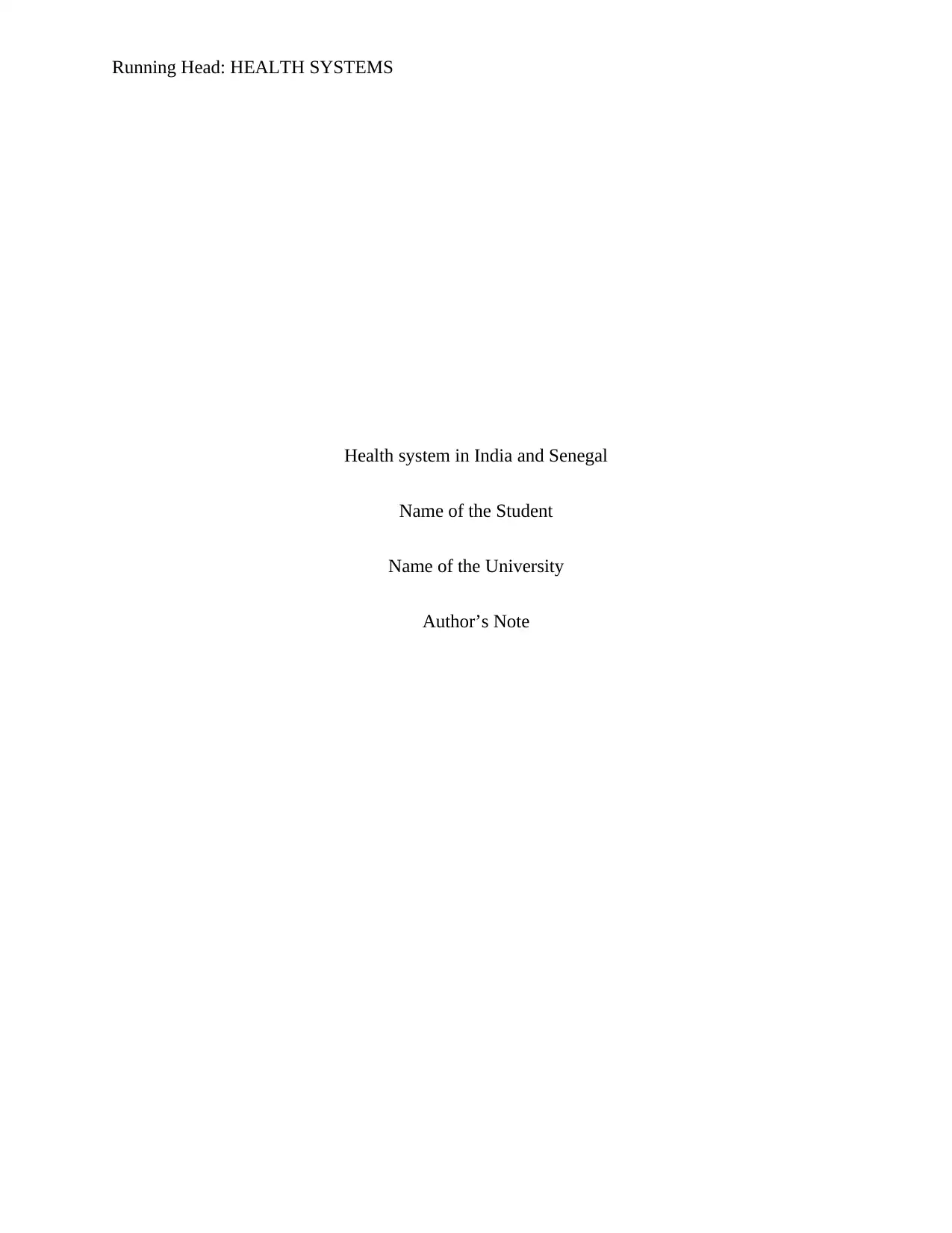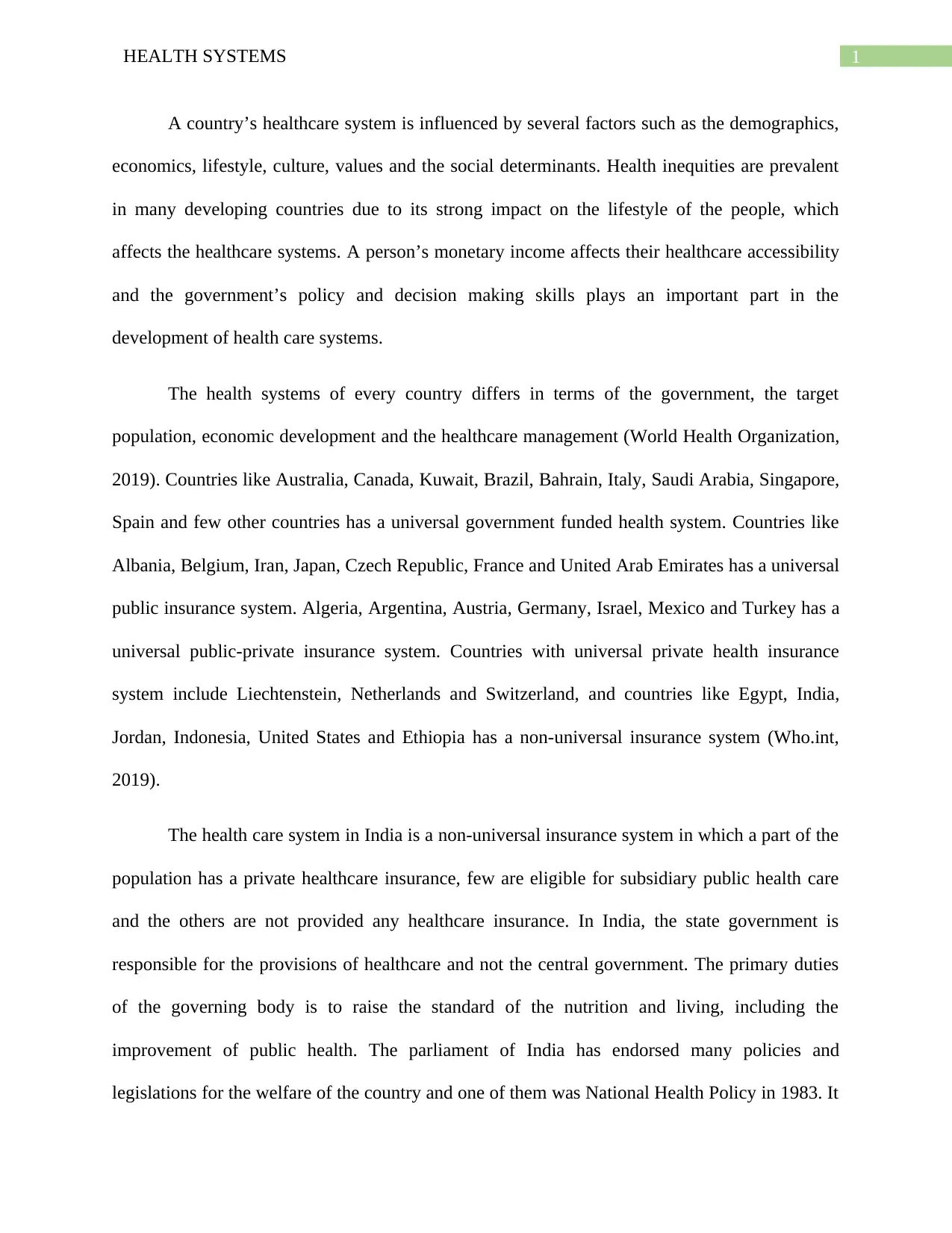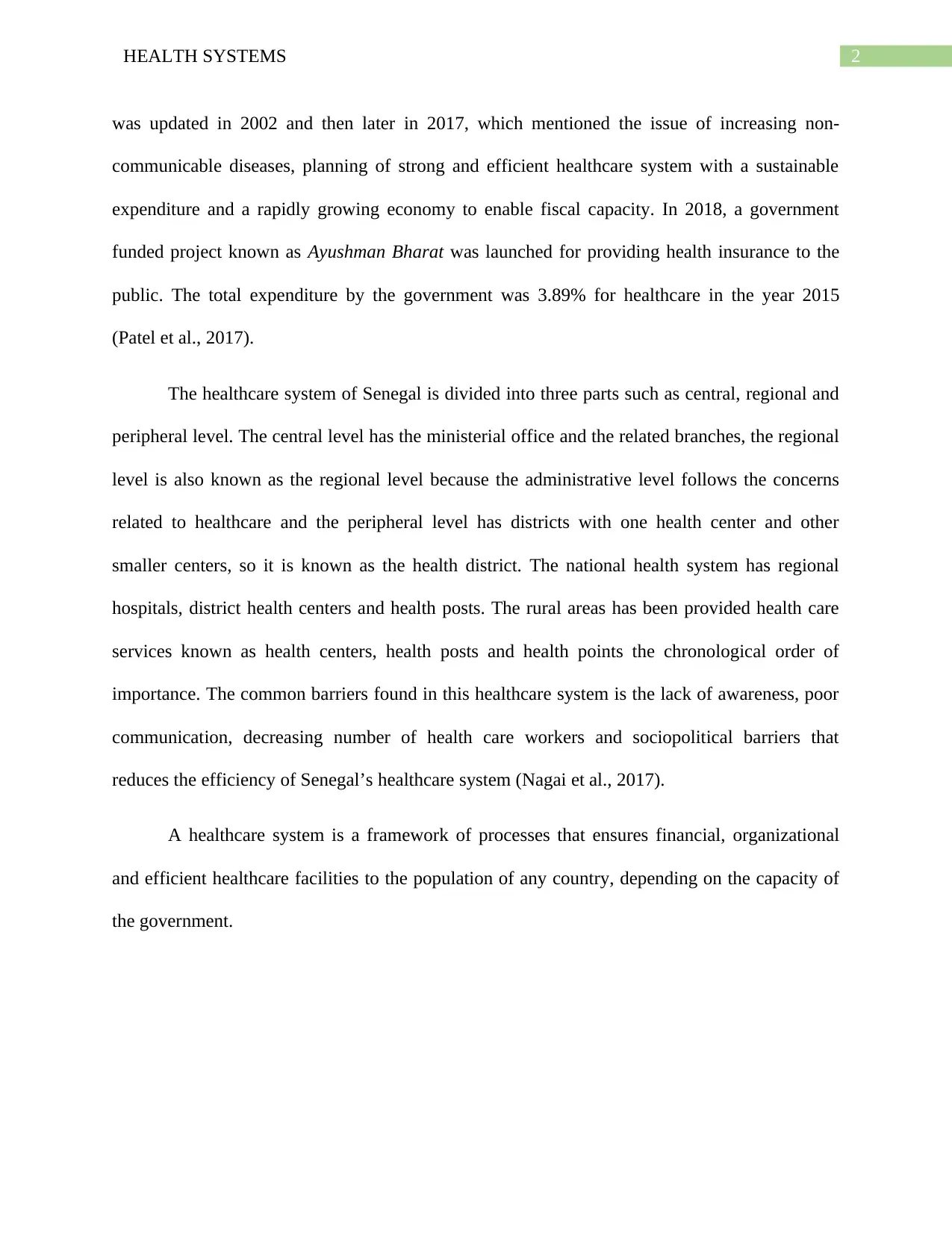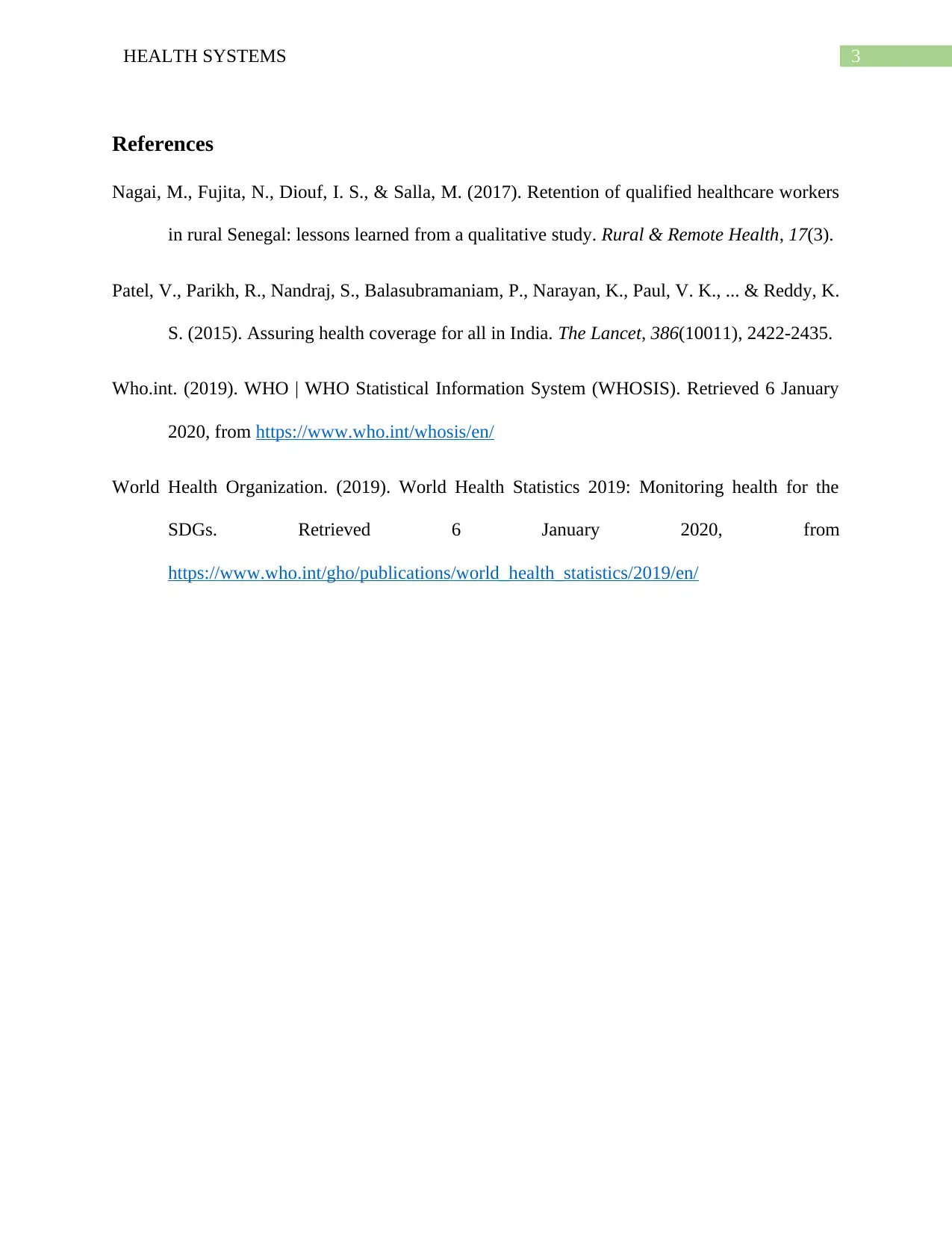Comparative Report: Health Systems of India and Senegal - Analysis
VerifiedAdded on 2022/08/31
|4
|806
|15
Report
AI Summary
This report provides a comparative analysis of the healthcare systems in India and Senegal. It examines the factors influencing each system, including demographics, economics, and government policies. The report highlights the non-universal insurance system in India, the role of state governments, and the implementation of initiatives like Ayushman Bharat. It also outlines the three-tiered structure of Senegal's healthcare system, identifying key challenges such as awareness gaps, communication issues, and socioeconomic barriers. The analysis references relevant studies and data to offer a comprehensive overview of the strengths, weaknesses, and overall effectiveness of each country's approach to healthcare delivery. The report concludes by emphasizing the importance of understanding these systems to address health inequities and improve healthcare accessibility.
1 out of 4











![[object Object]](/_next/static/media/star-bottom.7253800d.svg)